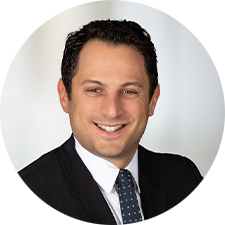We brought together partners from across the world of private funds – buyouts, secondaries, hedge funds, fund finance and wealth solutions – and had them answer some of biggest questions facing GPs and LPs alike. What did they have to say? Relationships are key and so is creativity. New investors are emerging in just about every strategy and AI will have the ability to change the game – if used correctly.
Scroll down to read in full their answers about the biggest challenges facing investors, the new strategies on their minds and the opportunities ahead. And be sure to join us on September 18th for our Funds in Focus marquee event to hear from these partners in more about all things private funds.

What strategies are GPs using to differentiate their funds in a competitive fundraising environment, and how are LPs evaluating these strategies?
Kerry Fitzgerald Shriver
Private Funds, Boston
When it comes to differentiating themselves, the most successful for managers are often the ones with increased focus on their relationships with LPs. Many managers in the market over the last 18 months or so have been faced with increasing diligence requests, reporting items and pushed on terms that were not previously questioned in prior funds. As such, managers who have long-standing relationships or anchor investors may be best served to preview terms for an upcoming fundraise and ascertain where their particular sticking points might be. Often there are terms that from an operational standpoint may be relatively easy to change (even if such terms were in prior funds) and build some goodwill with LPs. Another way managers can stand out is in their transparency and communications with LPs. Particularly in what can often be an uncertain fundraising environment, clear communication on timing and expectations for the duration of the fundraising period, expectations on the pace of investment and when the manager next expects to come to market (and with what product) are appreciated.

How is increasing investor demand for secondary investments shaping the market, and what implications does this have for fund strategies and capital deployment?
Blake Halperin
Secondaries, Boca Raton
The demand for secondaries has changed the landscape for both new and established investors. Many firms that have historically been engaged in direct buyout strategies have launched their own secondaries funds to satisfy their investors’ appetite for more exposure and the more established secondaries firms are raising larger funds. Many of the largest fundraises over the past few years have been secondaries fundraises and we expect that trend to continue. The inrush of capital and participants has also led to specialization within the secondaries market itself. It is now more common for a secondaries strategy to be focused on a specific sector. For example, some sponsors have differentiated themselves by only focusing on credit, real estate or infrastructure secondaries. This trend is likely to continue as both the primary private equity market and secondaries market grow further. Additionally, as appetite increases on the buyside and as secondaries become more “mainstream,” there is an uptick in 40 Act Funds that cater to high-net-worth individuals and family offices.
We brought together partners from across the world of private funds – buyouts, secondaries, hedge funds, fund finance and wealth solutions – and had them answer some of biggest questions facing GPs and LPs alike. What did they have to say? Relationships are key and so is creativity. New investors are emerging in just about every strategy and AI will have the ability to change the game – if used correctly.
Scroll down to read in full their answers about the biggest challenges facing investors, the new strategies on their minds and the opportunities ahead. And be sure to join us on September 18th for our Funds in Focus marquee event to hear from these partners in more about all things private funds.

What strategies are GPs using to differentiate their funds in a competitive fundraising environment, and how are LPs evaluating these strategies?
Kerry Fitzgerald Shriver
Private Funds, Boston
When it comes to differentiating themselves, the most successful for managers are often the ones with increased focus on their relationships with LPs. Many managers in the market over the last 18 months or so have been faced with increasing diligence requests, reporting items and pushed on terms that were not previously questioned in prior funds. As such, managers who have long-standing relationships or anchor investors may be best served to preview terms for an upcoming fundraise and ascertain where their particular sticking points might be. Often there are terms that from an operational standpoint may be relatively easy to change (even if such terms were in prior funds) and build some goodwill with LPs. Another way managers can stand out is in their transparency and communications with LPs. Particularly in what can often be an uncertain fundraising environment, clear communication on timing and expectations for the duration of the fundraising period, expectations on the pace of investment and when the manager next expects to come to market (and with what product) are appreciated.

How is increasing investor demand for secondary investments shaping the market, and what implications does this have for fund strategies and capital deployment?
Blake Halperin
Secondaries, Boca Raton
The demand for secondaries has changed the landscape for both new and established investors. Many firms that have historically been engaged in direct buyout strategies have launched their own secondaries funds to satisfy their investors’ appetite for more exposure and the more established secondaries firms are raising larger funds. Many of the largest fundraises over the past few years have been secondaries fundraises and we expect that trend to continue. The inrush of capital and participants has also led to specialization within the secondaries market itself. It is now more common for a secondaries strategy to be focused on a specific sector. For example, some sponsors have differentiated themselves by only focusing on credit, real estate or infrastructure secondaries. This trend is likely to continue as both the primary private equity market and secondaries market grow further. Additionally, as appetite increases on the buyside and as secondaries become more “mainstream,” there is an uptick in 40 Act Funds that cater to high-net-worth individuals and family offices.
[View source.]





